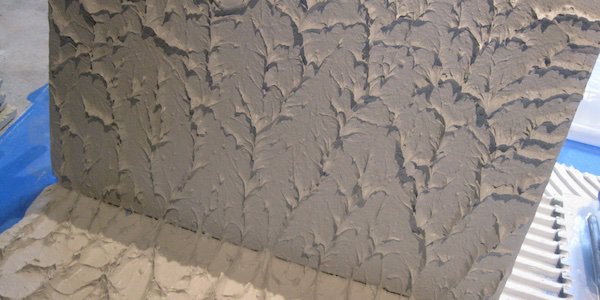

QUESTION
I have a commercial job where we installed 12"x24" porcelain tile with a rapid thinset and grouted next day with an epoxy grout.
Two weeks later, we had to remove some tile since it sounded hollow. The thinset was still wet, dark gray color and was scraped easily with a construction knife. Do you think this is normal?

ANSWER
A few years ago I installed a new tile floor in a hospital. The work was done at night and was walked on four hours later. For this reason, we used a rapid thinset. We typically grouted the following day with high-performance cementitous grout.
Six weeks later, there was a tile that was chipped and needed to be replaced. I removed the tile and had the exact same scenario. The thinset was still damp – very firm but definitely not hard – and I was able to remove the mortar with a razor scraper.
I contacted the manufacturer, and they said since porcelain tile was installed on top of crack-isolation membrane, the moisture had no place to go. They said that since porcelain tile and crack membrane allows such little amounts of moisture through, that they were not concerned about the moisture, or early bond strength, and eventually the moisture would work its way out.
That was 5-7 years ago and not one single tile has needed replacing or had any bonding issues. I’d recommend they confirm their situation with the manufacturer. – Randy Fleming, NTCA Technical Trainer
ADVERTISEMENT
Suitable substrate for 3/4″ travertine
QUESTION
I have a customer that wants to install 3/4″ travertine on their floor. Do I still need to add 1/2″ to the substrate, since the stone is 3/4″?
ANSWER
The answer to your question is yes. A stone is considered a “tile” until it is thicker than 3/4″ and larger than 24″x24″. Therefore, F250 (Stone) in the TCNA Handbook applies and requires the second layer of wood to help ensure the correct deflection ratings for the floor system.
If the stone is larger than 3/4″x24″x24″, I would be extremely cautious setting it on a wood structure. Deflection is critical. Deflection is measured not only across the entire span of the floor, but between spans of load-bearing structures (i.e. floor joists). It is common for deflection to result in cracking along the tops of joists, rather than between joists. Calculating for the weight of the tile assembly, dead load, live loads and forecasted/planned use is also critical. Determining the suitability of the wood structure to properly support such an installation is typically beyond the requirements of a tile contractor’s ability/knowledge. I suggest that a structural engineer or architect is consulted to determine whether the structure is suitable for this installation. – Mark Heinlein, NTCA Training Director




